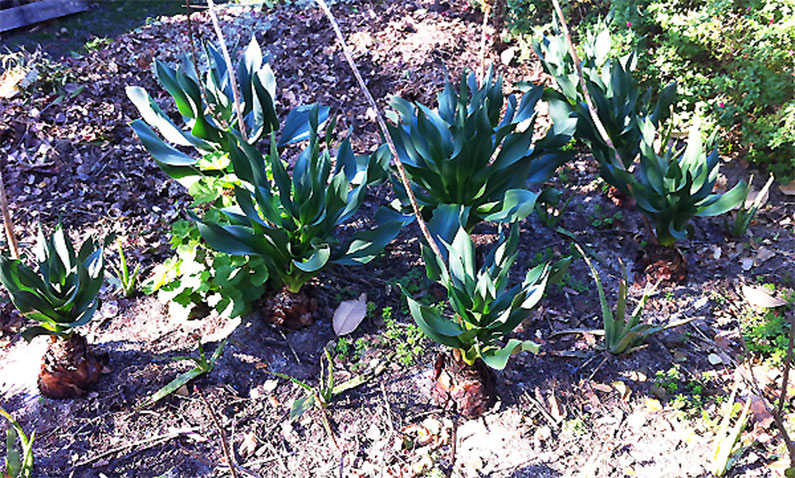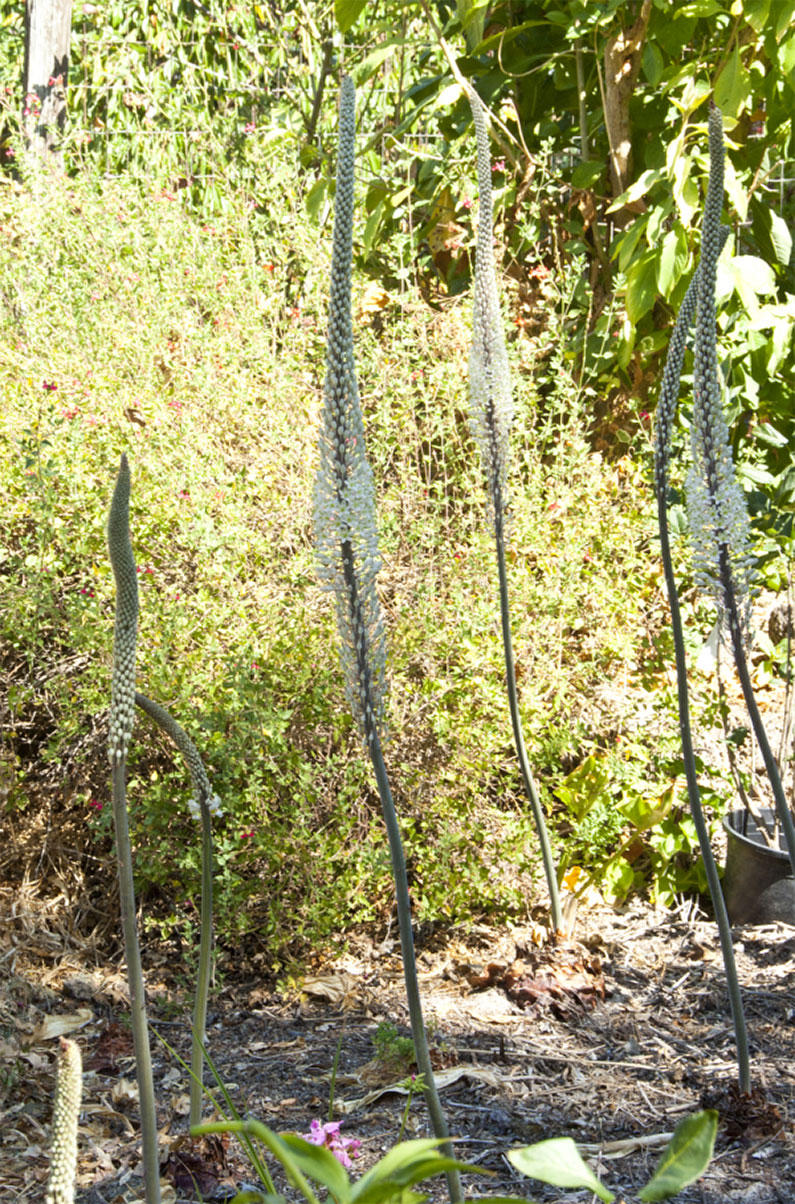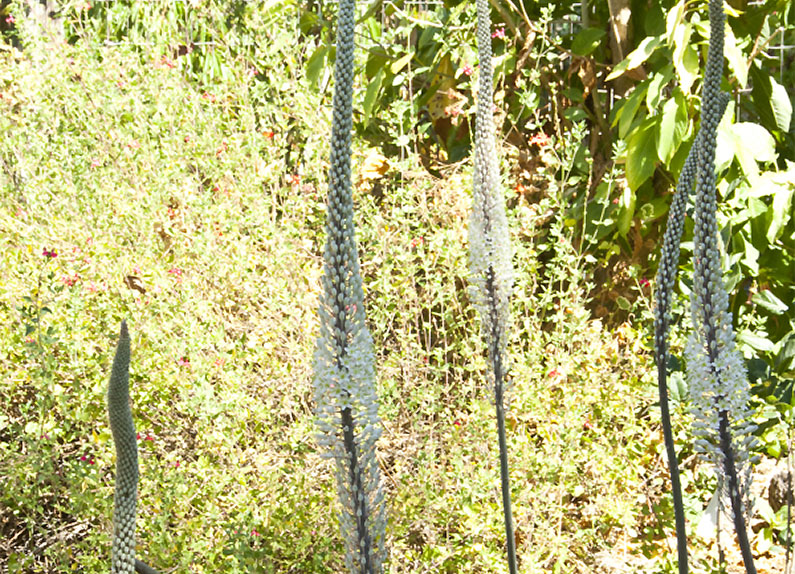The largest bulb in the world, I believe, is the Giant Scilla. It has lush large leaves in the fall which die back in the cold winter. In the spring it blooms on long stems which look like the fox tail lily and are five feet tall. There is a smaller version called the Delicate Scilla which grows to three feet. In my garden, the Delicate Scilla looks very similar to the taller one. The largest scilla has bulbs almost the size of a soccer ball and the smaller one the size of a grapefruit.
 In the spring, the flower stems emerge and bloom with the florettes opening from the bottom up.
In the spring, the flower stems emerge and bloom with the florettes opening from the bottom up.
 When in bloom, the bulbs look like naked ladies with part of the bulb visible and no foliage.
When in bloom, the bulbs look like naked ladies with part of the bulb visible and no foliage.
Planting the Giant Scilla and the Delicate Scilla:
- Prepare the soil with lots of loose material and add sand if the soil is heavy.
- I used an old compost pile and added coarse builders sand in order to maximize drainage as these desert adapted bulbs cannot sit in wet ground.
- Part of the bulb should be exposed after planting and these even rose up a little more as they developed roots as you can see in the first photograph. Its roots spread out over a good distance and so are not really useful in pots (plus they could be damaged by frost more easily).


0 Comments